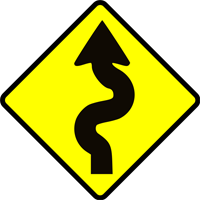Associated with the word “Practice” are quantitative words like “repetitions, duration, sets”. Most just repeat what was taught last class and do not have a specific training strategy that support constant improvements.
To compare effectiveness of different ways to practice, you have to have a way to measure and therefore you must know the target end-state and what the activity aims to improve on. As an example, jumping is an awesome exercise for your legs, lungs and heart. However, simply jumping everyday will not make you great in high-jump, long-jump or rope skipping. Knowing the measurements allow practices to be targeted. Furthermore, focusing on “What is required” allows us to be creative and experiment alternatives.
The following list of goals (the “what”) is not intended to be exhaustive. The emphasis is on areas often missed and includes both mental and physical aspects. :
- Strong baseline like strength, speed, endurance, aerobic and anaerobic capacity, flexibility etc can be accomplished via sound conditioning.
- “The bullet” – create a hit that can cause serious damage and therefore catches your adversaries’ attention.
- Understand and apply mechanical principles – understand and believe in the mechanical principles of each skill and apply it to other skills and things.
- Coordination – integration, sequencing, explosiveness, angling, overcoming inertia, etc
- Toughen up your body like knuckles, wrist, palm, fingers, forearm, elbow, shin, knee, shoulder, tummy, neck, etc. Be ready to “deliver” as well as to “take”.
- Ability to channel stress, anxiety and emotions to productive use takes practices.
- Sensory (vision, tactile, instinct, awareness, etc)- be able to see mechanical principles used, reactions; be able to feel the balance of yourself or of your opponent; be able manage sensitivity at will; be able to remove non-productive tension; be able to take failures; be ready to adapt to unknowns.
- Train on moving targets and/or surfaces – your opponent is not static, being able to respond to changes is very important
- Understand and apply human dynamics – understand and believe in psychology and apply it in a positive manner to preempt threats.
- Scenarios – in different situations and in different relative positions and with different limiting factors while under stress
- Apply recovery principles – heal faster, rest better, recover quicker, etc.
- Prioritize, set goals and create training plan and be able to stick with it.
- Measure progress – write down what you learned / did and try to measure progress over time. You can often gain new perspectives reading your own training or class notes.
Exercise:
- Design a week’s training plan applying the above considerations and bring it to class or email it to me for review.
- Give your best effort in trying to follow through with your training plan. Use a green marker against activities that you completed and red marker on items that you did not complete. Make it visual.
- Look at the red (as well as the green) and see how you can adjust to make the training plan work better for the following week and repeat process.
